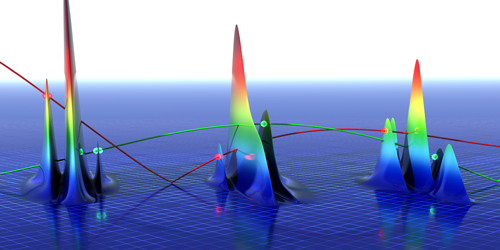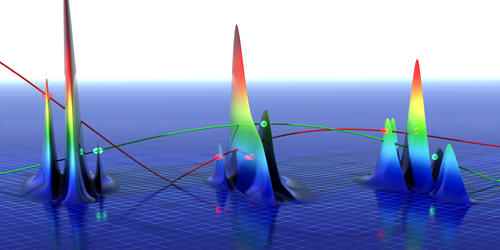Decoding the Light from Ten Million Quantum Dots
Excite a single quantum dot and it will emit light of a specific frequency. But excite multiple quantum dots simultaneously and the result is a color blur—the tiniest variations in size and composition of the dots can dramatically shift the colors of light they emit. This frequency broadening is problematic for technological applications, such as lasers, which require coherent light at a single frequency. Now Takeshi Suzuki, jointly at the University of Colorado, Boulder, and the University of Michigan, Ann Arbor, and colleagues have demonstrated a technique that could reduce such a frequency smearing by isolating the light emitted from subsets of quantum dot ensembles.
The team started out with 10 million semiconductor quantum dots in their ground states. A series of laser pulses was applied to the system to excite the dots into various quantum states. The first pulse primed the quantum dots so that they were all in excited states. The next three pulses then transitioned the system through different excited and superposition states. The frequency and phase of light emitted by each dot after this process were dependent on dot size and the energy transitions it underwent.
Decomposing the final electric-field signal emitted by the quantum dots into its frequency components, the researchers showed that their excitation scheme resulted in distinguishable peaks, rather than one continuous blur. These were then mapped to possible transitions of the quantum dots' signals and each peak was assigned to a given size of quantum dot. The technique might enable tracking and utilization of quantum-dot subpopulations that have a narrower frequency response than the population as a whole.
This research is published in Physical Review Letters.
–Katherine Wright
Katherine Wright is a Contributing Editor for Physics.





